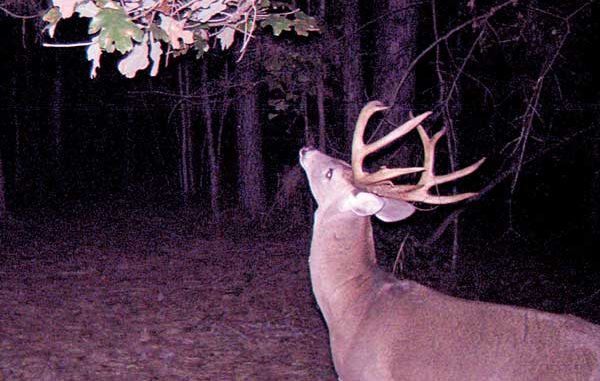
The 2008 season was another banner year for many deer hunters, with trophy racks lined up at the taxidermist and a year’s worth of steak, sausage, and jerky chilling in the icebox. While many hunters bagged their trophies, many big bucks survived, leaving leftover tags and a bundle of cash ear-marked for the local taxidermist under the mattress for another year. An opportunity for a big buck takes food-source development and thorough scouting, pre-season and post-season. Outsmarting big bucks begins just after the close of the season, while they are still in their late-season locales. Post-season scouting is critical to locate the “big boy’s” playground, because too much disturbance during the season will disrupt the deer’s pattern, shifting them to another location.
“Post-season scouting is a critical tool for locating big-buck hangouts. Thorough scouting activity after the season allows the hunter to enter key areas without the worry of bumping big bucks,” said Jonathan Phillips, the game manager at Black River Plantation in Clarendon Co.
“Too much scouting during the season leads to misfortune — pushing big bucks out of the area: a typical mistake made by hunters during the season. Bucks find areas that are void of human activity as safe havens. Stands can be set up between these areas and food sources to intercept deer in transit.
“Look for concentrations of large rubs and remnant scrapes within areas off the beaten path.”
Bucks will make rubs to mark the outlying limits of their territory and will have a large accumulation of rubs adjacent to and within their protected bedding area. Begin at concentrated fall food sources and follow trails into the bush.
“Bucks will remain within their late-season use areas and will routinely use the same late season areas year after year,” Phillips said. “We find these areas post-season and set up stand sites for the upcoming season.”
While January is a good time to start, February allows enough time for antlers to break loose and to be found during post-season scouting adventures. While the size and character of rubs can help determine the age and size of a buck making them, the actual sheds give the hunter a definitive representation of the buck within the area.
Post-season activities are great for scouting, shed hunting, and gathering information for relocating and placing new stands as well. Post-season scouting quickly reveals buck hideouts, providing an opportunity to change strategies for bagging the trophy that slipped away a few weeks earlier.
Deer prefer to live in areas away from human activities, and restricting activities during the season to hunting will reduce overloading the woods with human scent. Deer are aware of new structures, such as box stands, ladder stands, and ground blinds. Stand relocation just after the season allows deer the better part of eight or nine months to get acclimated to these new structures.
Too many times, hunters move existing stands or place new ones just before the season, disrupting deer movements and activity patterns. While does and young bucks quickly get used to human intervention during the season, mature bucks will move to more protected areas.
Preliminary shooting-lane preparation is important for new stands. Without removing too much cover, selectively trim large branches, trees, and vines to open up shooting lanes at existing and new stand locations. Any post-season activities will improve hunter success and eliminate the hot, sweaty stress typical of stand preparation during the sweltering late summer.




Be the first to comment